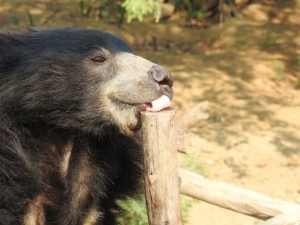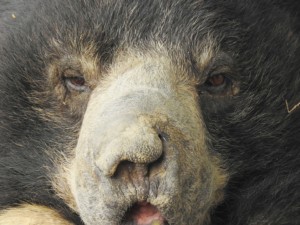Former 'Dancing Bears' at the Agra Bear Rescue Centre
In 2009, Wildlife S.O.S, a conservation non-profit headquartered in Delhi, rescued the very last ‘dancing bear’ and took it into protective care, thus ending this barbaric 400-year old practice.
In the ‘dancing bear’ tradition, young sloth bear cubs were snatched from the wild and their muzzles brutally pierced with a hot metal rod (without anaesthesia), to insert the control rope. The muzzle wounds were not allowed to heal, and when the handler tugged the control rope, the bear would writhe in agony, which was perceived as ‘dancing’. In many cases, the owners also crudely knocked out the canine teeth of the young bears.
Wildlife S.O.S. rescued over 620 dancing bears from the streets of India. They are housed and cared for in four different centres across India, including the Agra Bear Rescue Facility, where these photographs were taken. Having spent their lives in captivity with their owners, it is not possible for these bears to return to the wild. Hence, the non-profit has made every effort to replicate natural living conditions for these bears.
Wildlife S.O.S. also rehabilitated the owners of these bears, a nomadic community known as ‘kalandars’. The ‘kalanders’ were provided with monetary support, alternative skills training, as well as education for their children.
Today, the rescued bears at the four Wildlife S.O.S. centres will live out their lives being free of the short rope that enslaved them, and just being bears!
The Sloth bear (Melursus ursinus) is endemic to the Indian subcontinent and their conservation status is listed as ‘Vulnerable’ by IUCN. The ‘dancing bear’ practice contributed heavily to the reduction in their numbers.












